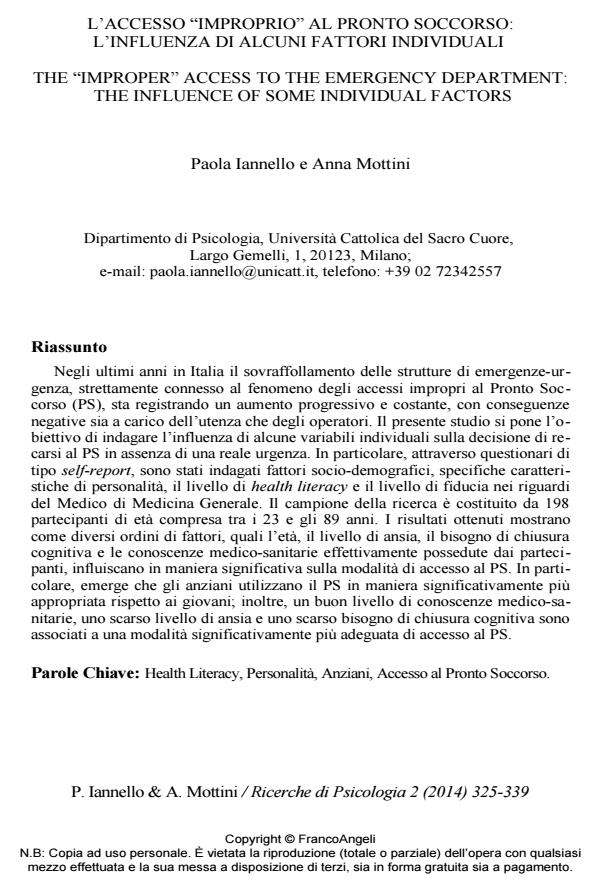The "improper" access to the emergency department: the influence of some individual factors
Journal title RICERCHE DI PSICOLOGIA
Author/s Paola Iannello, Anna Mottini
Publishing Year 2015 Issue 2014/2
Language Italian Pages 15 P. 325-339 File size 217 KB
DOI 10.3280/RIP2014-002009
DOI is like a bar code for intellectual property: to have more infomation
click here
Below, you can see the article first page
If you want to buy this article in PDF format, you can do it, following the instructions to buy download credits

FrancoAngeli is member of Publishers International Linking Association, Inc (PILA), a not-for-profit association which run the CrossRef service enabling links to and from online scholarly content.
In recent years, in Italy the overcrowding of the emergency departments (ED), closely linked to the phenomenon of the improper accesses, is experiencing a gradual and steady increase, with negative consequences for both the users and the operators. The present study aims to investigate the influence of some individual variables on the decision to go to the PS without a real emergency. In particular, through self-report questionnaires, socio-demographic factors, specific personality characteristics, the individual level of health literacy and trust in respect of the general practitioner. The sample consists of 198 participants aged between 23 and 89 years. The results show that different sets of factors, such as age, the level of anxiety, the need for cognitive closure and the health knowledge actually possessed by the participants, affect significantly on how to access the PS. In particular, it emerges that older people use the PS in a more appropriate way than younger people; in addition, a good level of health knowledge, a low level of anxiety and a low need for cognitive closure are associated with a significantly more appropriate mode of access to the PS.
Keywords: Health Literacy, Personality, Elderly, Access to Emergency Department.
Paola Iannello, Anna Mottini, L’accesso "improprio" al pronto soccorso: l’influenza di alcuni fattori individuali in "RICERCHE DI PSICOLOGIA " 2/2014, pp 325-339, DOI: 10.3280/RIP2014-002009